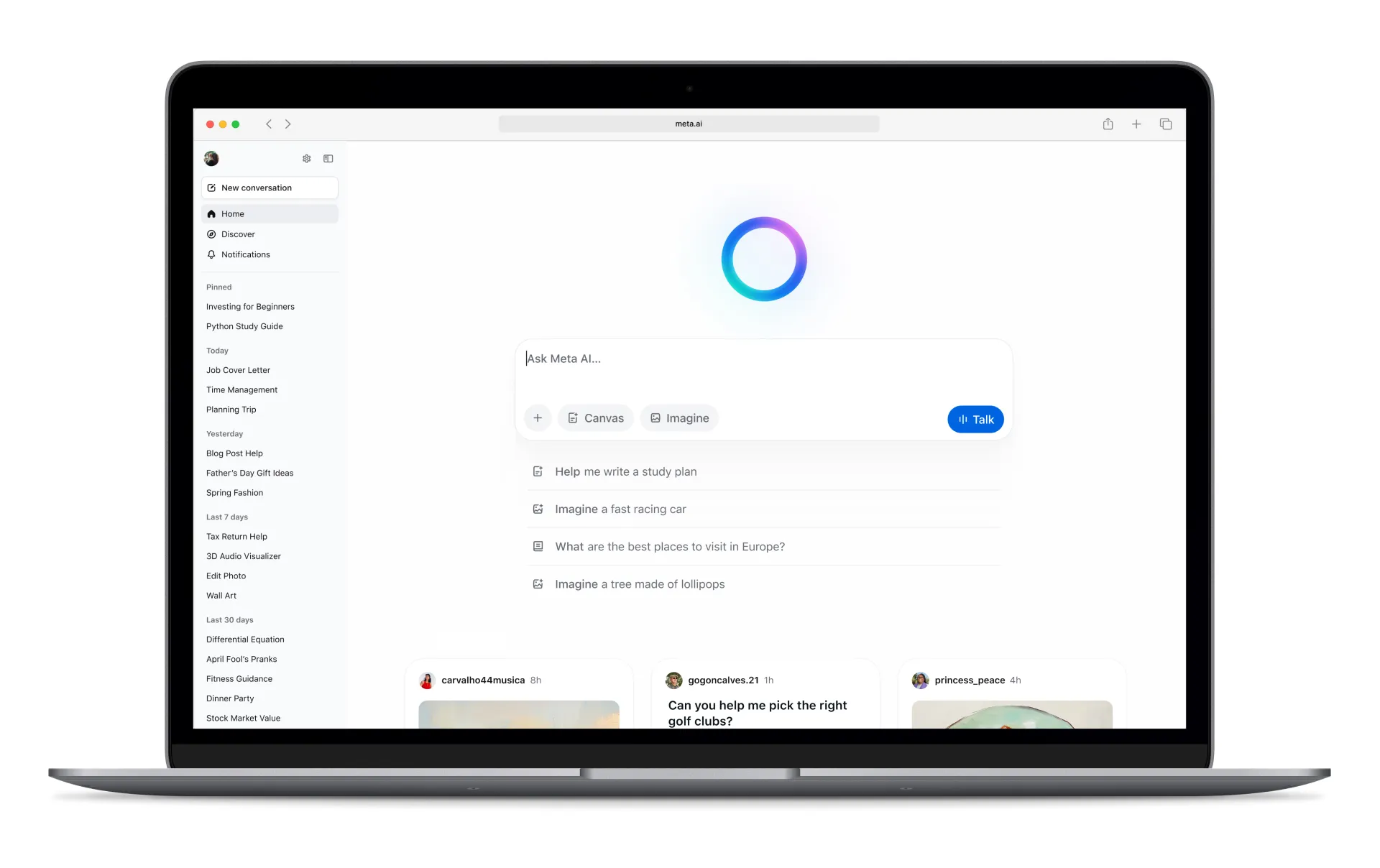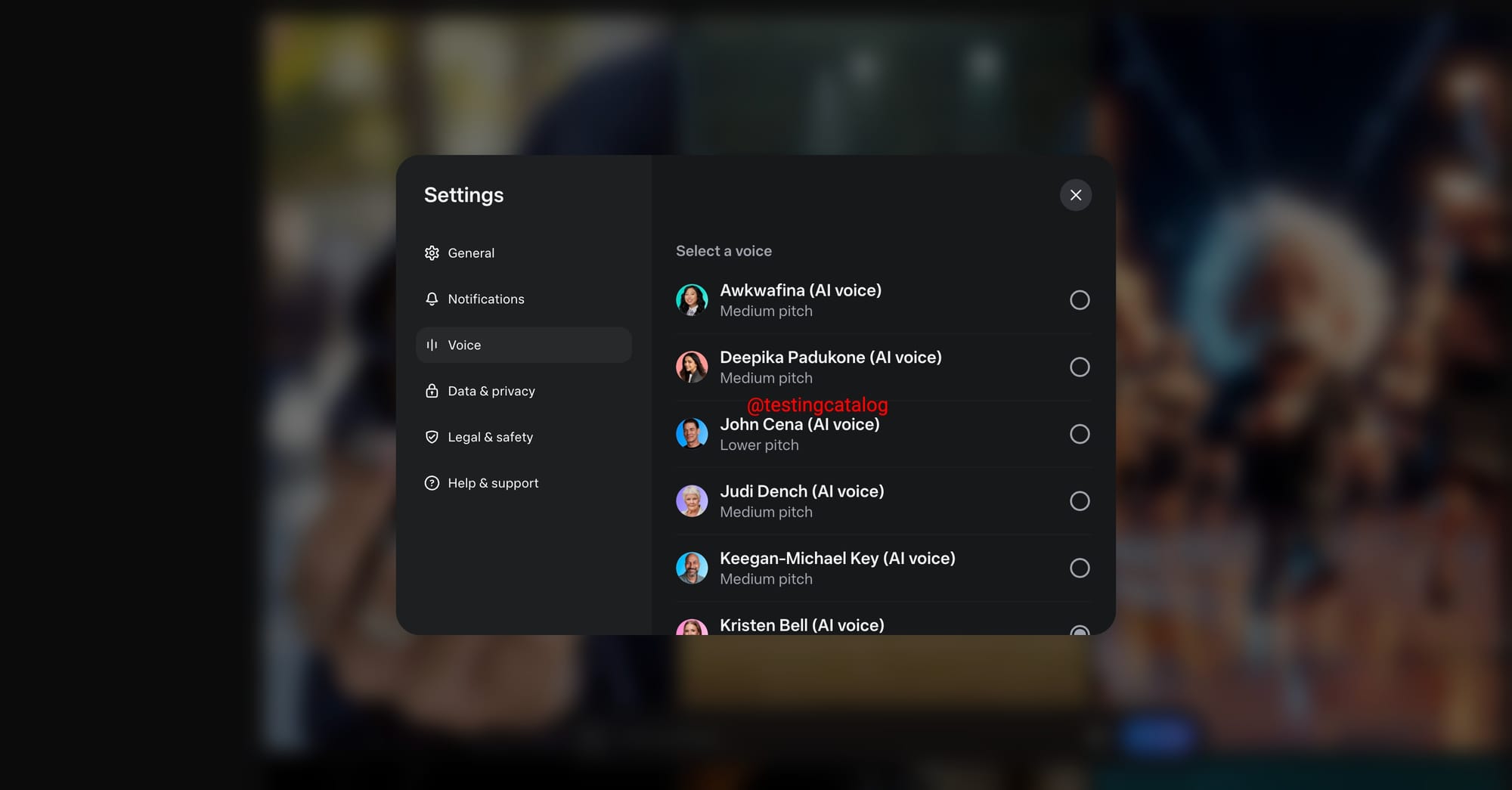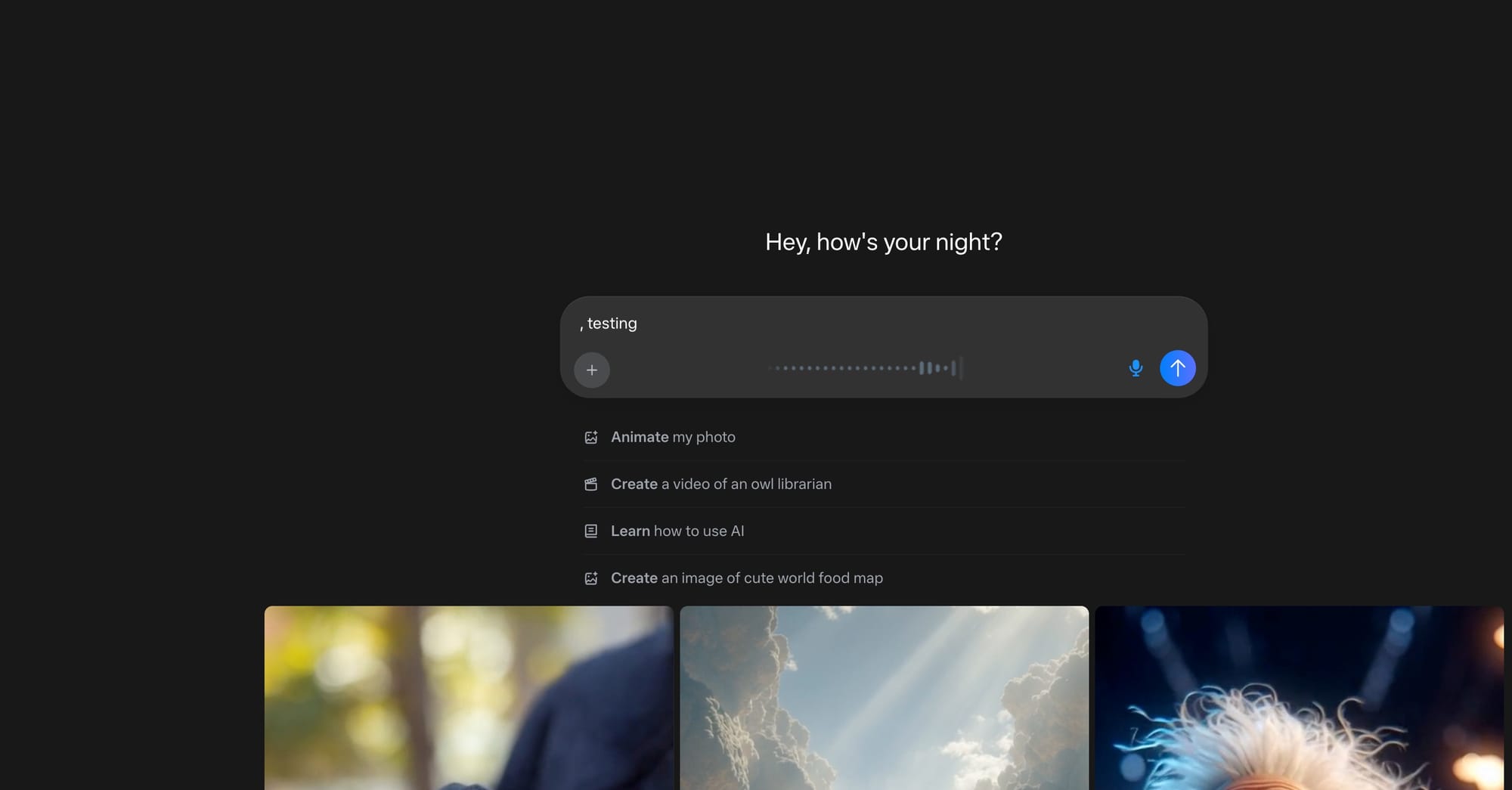Meta gears up to bridge feature gap with frontear AI Labs
October 25, 2025
Meta has been making visible moves to regain ground in the AI space after a period of stagnation, especially with the introduction of the Vibes feed powered by Midjourney. This update drove a notable increase in user activity on the Meta AI web app, and although the interface has been streamlined, most users only see the Imagine option now, the groundwork for more advanced features is becoming apparent.
Screenshots from earlier internal presentations around the Llama 4 period hinted at planned additions such as Canvas and Voice modes.

While voice functionality is accessible on mobile, the web version still lacks parity. However, evidence in the current menu structure suggests that these features are being actively developed and could be deployed collectively in a significant update, possibly aligned with the debut of Meta’s next-generation model from its Super Intelligence Lab.

The leaked menu reveals several unreleased features:
- Reasoning: Likely tied to a dedicated reasoning mode or a future model variant.
- Canvas: Already in limited testing and similar to collaborative or creative canvases seen in competitors.
- Connections: Possibly enabling integrations with third-party sources like Google Drive.
- Think Hard: Suggesting a higher-compute mode for more complex queries.
- Research: Matching “deep research” functionalities in other major AIs.
- Search: A focused retrieval or citation feature.
- Storybook: Presumably an AI-powered narrative generator, as seen in other platforms.

Some options have been prototyped but not launched, a common pattern for Meta AI. If rolled out together, these features could help close the feature gap with leading LLM competitors, which is a priority for Meta given its position as a challenger in this space.
Meta, under pressure to accelerate its AI capabilities, is attempting to provide a cohesive and competitive user experience by centralizing these advanced functions. The company’s broader AI product strategy aims to win back power users, attract creators, and establish feature parity with leading AI platforms. The actual timeline for public release remains uncertain, but the presence of these features in the updated UI strongly indicates Meta’s intent to make a robust comeback in the generative AI market.
Search
RECENT PRESS RELEASES
Related Post



